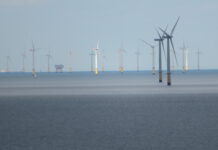
Natural gas is not cleaner than other fossil fuels and using it instead of coal or oil risks achieving little or no reduction in greenhouse gas effects. EASAC’s new report “Future of Gas” highlights the extremely high global warming potential of largely unrecorded methane leakages along the whole natural gas supply chain. To mitigate climate change, it is crucial to stop using all fossil fuels, to ban new natural gas boilers, and to massively ramp up renewable electricity production.
To replace Russian pipeline gas, European Member States have turned to liquid natural gas (LNG) from outside Europe. “We understand this is a necessary compromise as an emergency measure to make sure we keep the lights on, people warm and industries running. But as we are putting the immediate dependency on Russia behind us, we must completely phase out gas and ramp up renewables,” explains William Gillett, EASAC’s Energy Programme Director. “We can’t argue our way out of drastic changes. The climate does not make compromises.”
Methane emissions have a lifetime in the atmosphere of only about 10 years, which is ten times shorter than that of carbon dioxide. However, its 20-year global warming potential is over 80 times that of carbon dioxide, which means that it is far more destructive. “So far, we have been evaluating the impact of greenhouse gas emissions in a time span of up to 100 years. And there is nothing wrong with these calculations. However, climate change is progressing so fast that now we must focus on impacts within the next ten years. That’s why there is no alternative to replacing natural gas with renewables at once,” says Neven Duić, Chair of EASAC’s Energy Steering Panel.
With 65 million boilers installed in the EU to heat buildings, heating is by far the largest use of natural gas. Eight Member States have already adopted measures to ban the installation of new gas boilers or to require high levels of renewables in buildings. “Such actions should be stimulated throughout Europe,” recommends Duić.
The report recommends heat pumps and district heating as ready-to-use and climate-friendly alternatives to gas boilers. It underlines that heating, unlike electricity, is a very local market. Building structures and regulations, local climate, demand densities and the availability of renewable or waste heat sources influence what should be the best choice for each district or building. Therefore, cities must integrate the transition into urban planning, and engage with heating system owners and users.
Also, it is vital that this process addresses social injustices. William Gillett: “Not everybody has the money or enough credit with banks to go out and buy a new heating system. Europe’s success in reducing its greenhouse gas emissions requires foresight, social sensitivity, and support mechanisms that are targeted on the most vulnerable groups and households.”
Gas distribution and supply companies often argue for progressively replacing natural gas with hydrogen, which would allow them to keep their assets running for years to come. But from a scientific point of view, this approach holds very little promise for heating homes more cleanly. “Blending 10% hydrogen in natural gas merely delivers 1% in CO2 reduction which is not a good use of a valuable energy carrier that will be needed in hard-to-abate sectors. We foresee fast growing demand for hydrogen and hydrogen-derived fuels in some industries and for heavy-duty transport”, explains Anne Neumann, Chair of the EASAC Working Group.
For a long time, natural gas has been seen as the ideal bridge from coal on the road towards net-zero carbon emissions by 2050. In some countries, natural gas has become the main fuel to generate electricity. EASAC’s “Future of Gas” report makes clear that this is a dead-end road.
“Natural gas should no longer be considered as a transitional option. All electricity production and heating based on combustion literally fuels global warming, and must be replaced by renewables such as wind, solar, or hydro”, says Duić.
The report also weighs the possibilities of carbon capture and storage (CCS) and nuclear. “The coming decade is decisive for keeping climate change in check, but fusion is still in its infancy, and neither CCS nor new nuclear plants based on current or small modular reactor technology can be built quickly enough. In addition, in many regions, nuclear power plants risk becoming vulnerable to climate change effects such as cooling water scarcity”, concludes Gillett.
Full Report: https://easac.eu/publications/details/future-of-gas
Launch event: https://easac.eu/news/details/the-future-of-gas-1
Livestream via YouTube: https://www.youtube.com/@easac-europeanacademiessci7375

| [donate]
| Help keep news FREE for our readersSupporting your local community newspaper/online news outlet is crucial now more than ever. If you believe in independent journalism,then consider making a valuable contribution by making a one-time or monthly donation. We operate in rural areas where providing unbiased news can be challenging. |



















